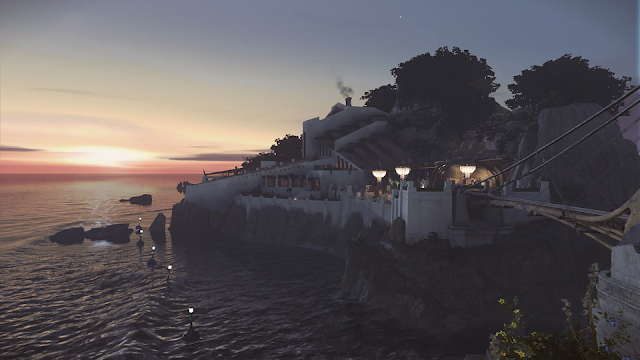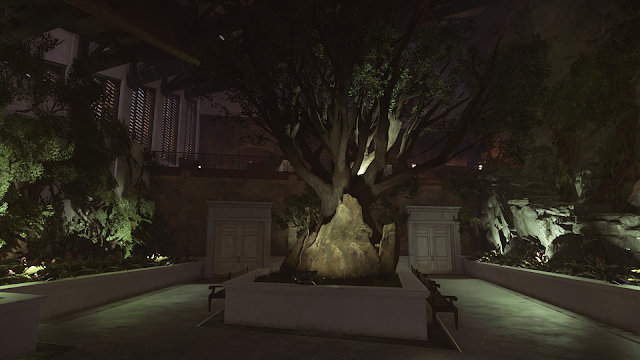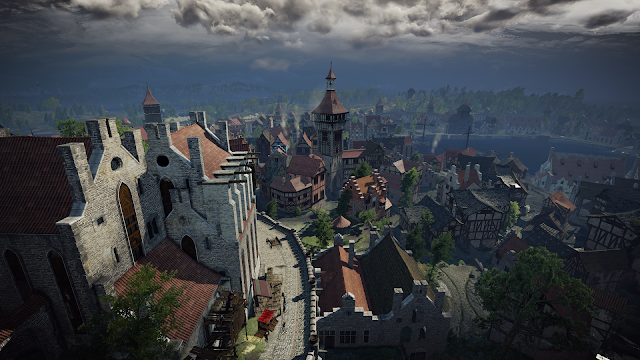Karnaca’s Grand Palace is in a pretty sad state. Sneak around this otherwise beautiful building for even a few minutes and you’ll come across all the hallmarks of drunken debauchery: stained furniture, shattered glasses, and even a few lost articles of clothing. (They don’t seem to be outerwear). The Duke sure knows how to throw a party.
The Duke of Serkonos, Luca Abele, has always been a bad apple. His father was a fine ruler with unshakable principles and a strong commitment to the people of his realm, but Luca fell far from the tree. The future Duke of Serkonos began to show violent tendencies while still in school. Goading his little brother Radanis into attacking a homeless girl, he made himself an accessory to the girl’s murder - and responsible for the death of his brother. (Radanis lost his life in the encounter). This disdain for human life stuck with him into adulthood: Luca became an oppressive and authoritarian ruler bent on squeezing every last coin that he possibly can from the people of Serkonos. The majority of his ill-gotten gains went towards remodeling the Grand Palace.
 |
| The Grand Palace is home to Luca Abele, the Duke of Serkonos |
 |
| The signs of drunken debauchery are all over the place |
Power and prestige permeate the Duke’s abode. Structuring every aspect of its architecture, these closely related concepts define the ‘genius loci’ of the Grand Palace. In other words, they serve to give it a sense of place. This is echoed in the building’s location, construction materials, and decorative patterns.
Covering most of the narrow promontory known as Point Abele, the Grand Palace represents a claim to power over both nature and man. Flouting the forces of sea and sky, the building defiantly repels the ocean’s crashing waves and the wind’s furious gale. But the Duke’s abode also dominates the surrounding city. Standing right at Karnaca’s geographic center, it offers nearly panoptic views onto Luca’s most prized possession: his capital.
This location puts the Duke in the most prestigious part of town, too. Point Abele is the perfect place to see, but also to be seen. Since the Grand Palace is a convenient landmark for the majority of Karnaca’s residents, the building’s owner necessarily looms large in the lives of many locals. Glance over towards Karnaca Bay from anywhere in the city and you’ll see his demeure. Disconnected from the mainland by a private tram line, this allows the Duke to augment his authority and status while keeping the unwashed masses at arm’s length.
 |
| The Grand Palace is highly visible, but hard to access |
Something about the Grand Palace makes it seem rather severe. There are several reasons for this phenomenon, but a big one is the building materials. The structure is mostly hard stone, rigid metal, and cold glass. Poking through the Grand Palace like needles in a pincushion, the only wooden elements are the building’s bone-like beams. (The floors in some rooms are also hardwood).
 |
| The ducal residence has relatively few wooden elements |
Sneak into the dining hall and you’ll find a series of wooden ribs holding up a narrow mezzanine. Punctuated by cased openings with elaborately decorated lintels, the room’s redbrick walls transition seamlessly into a floor paved with slabs of dark slate. The space feels pretty frigid even despite the signs of raucous revelry. Make your way over to the bathhouse for a similar sight: wrought-iron columns under a glass dome. The steamy pool in the middle does nothing to soften the ambiance. The same slate flooring seen in the dining hall even makes it seem strangely sinister. With its panoramic views onto the surrounding city, this part of the Grand Palace helps to communicate the Duke’s exploitative relationship to the subjects of his realm. Luca enjoys the warm waters that his people provide, but his heart is colder than all of this iron, glass, and slate combined.
 |
| The dining hall is pretty frigid |
 |
| The bathhouse communicates power |
The decorative patterns used throughout the Grand Palace are no less artificial than its building materials. There’s a focus on straight lines, sharp angles, and geometric shapes. These are expressive enough in themselves about Luca’s personality, but they also show his attitude towards nature by strangling the building’s only signs of life. Karnaca will never be enough to sate the Duke’s appetite. He craves total domination.
The main entryway is a clear assertion of control over the forces of nature. (Luca’s ten-foot tall statue even stands atop a tree trunk). People have always used gardens like this one to master mother nature, but the Duke did more than just make her miniature. He actually dominated her. With its jagged stepping stones and linear embankments, the main entryway’s architecture clashes dramatically with its rocks, plants, and waterworks. Creep into the neighboring reception hall and you’ll see the same thing. Held in check behind a series of retaining walls, the trees and shrubs in this room have been completely subdued by its architecture. (The high ceiling even denies them access to sunlight). Sharply contrasting with the reception hall’s various linear elements like the decorations on the floor and the rectangular planters, the irregular shapes of these trees and shrubs appear thoroughly curbed, conquered, and controlled.
 |
| The Duke's statue looms large over the main entrance |
 |
| The reception hall's architecture cuts mother nature down to size |
Make your way into Luca’s office and you’ll find that he likes to associate himself with lions. This ancient symbol should remind you of the Duke’s obsession with power and prestige, but also direct your attention towards the various other expressions of these important concepts. They truly permeate the Duke’s abode. Lending the building a sense of place, these two concepts appear in the location, construction materials, and decorative patterns of the Grand Palace. Crowning over Point Abele, the structure is ideally situated for its owner to both see and be seen. The building materials communicate cold indifference. The sharp angles and linear elements imply dominance. Luca’s obviously a despot, but there’s one question at this point which remains to be answered: what kind of justice best befits him? The developer behind
Dishonored 2, Arkane, lets you figure that one out on your own.











